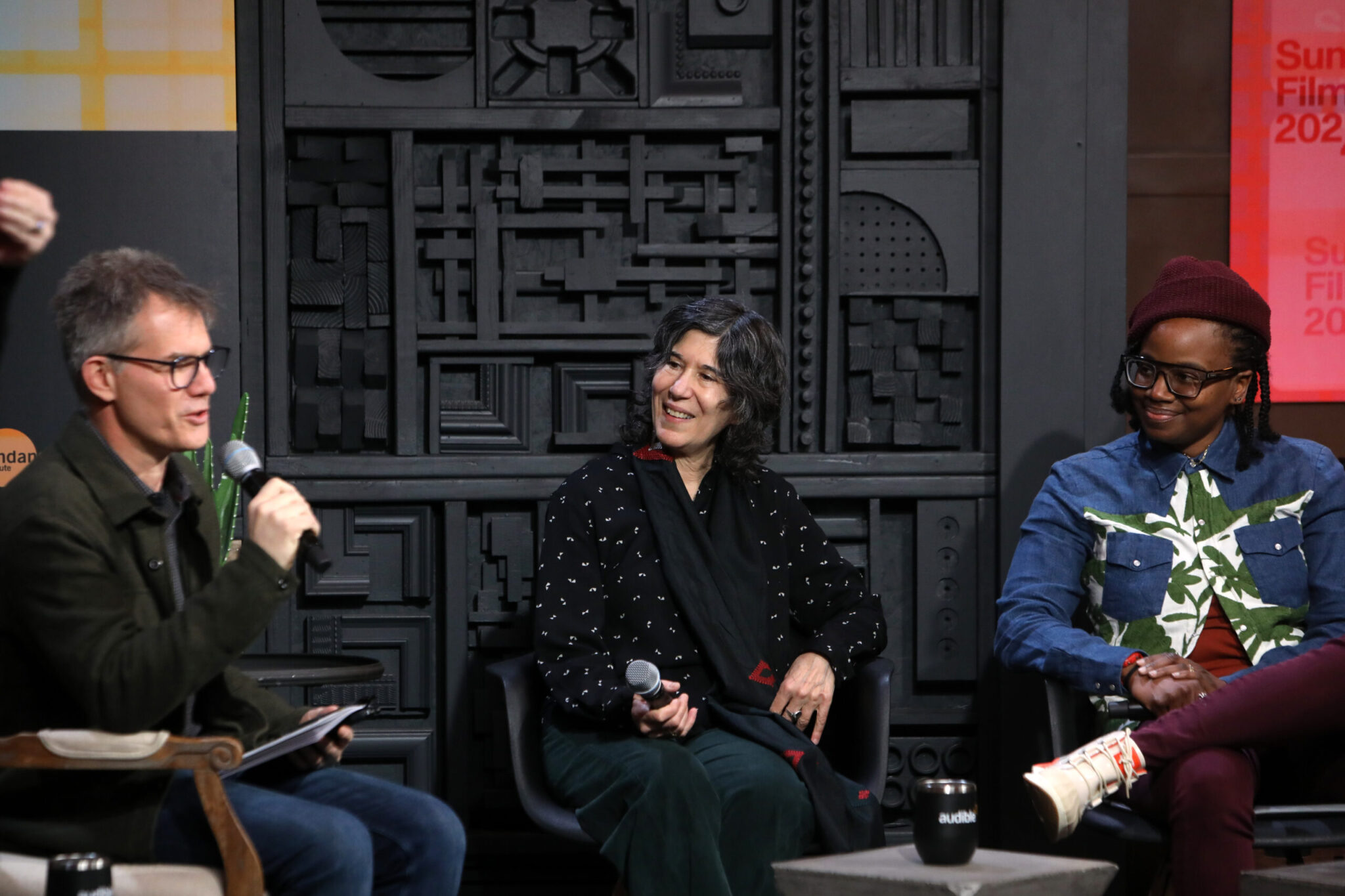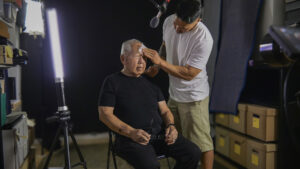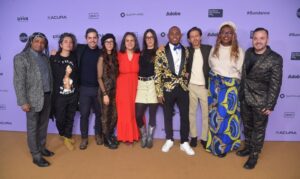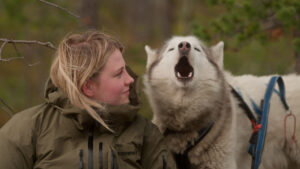PARK CITY, UTAH – JANUARY 25: (L–R) John Nein, Debra Granik, and Dee Rees at Cinema Café at the 2024 Sundance Film Festival. (Photo by Michael Hurcomb/Shutterstock for Sundance Film Festival)
By Lucy Spicer
“The interesting thing about Cinema Café is that when we put these things together, we do it a little bit intuitively,” says John Nein, one of the senior programmers for the Sundance Film Festival. “And then when I started thinking about what we might talk about today, it becomes very apparent that there are so many fascinating overlaps in their careers.”
He’s not wrong. Debra Granik and Dee Rees, the two featured guests at Filmmaker Lodge on January 25, have a lot in common: They attended New York University, they each made a student short film that they later adapted into a feature that screened at the Sundance Film Festival (Granik’s To the Bone and Rees’ Pariah), they’ve both participated in Sundance Institute’s Feature Film Program, and — as of this year — they’ve both been jurors at the Festival. Granik is screening the first two episodes of her Episodic Conbody VS Everybody at the 2024 Fest, where Rees’ Pariah is also showing as part of the Festival’s 40th Edition Celebration Screenings and Events.
So how does one choose which topics to focus on in a discussion that could easily continue for hours and hours? Nein’s questions span the lengths of the filmmakers’ careers thus far, from their time at film school to their experiences at the Sundance Institute labs to how they currently approach artistic decisions in casting and depicting sensitive subjects.
Read on for some of our favorite insightful quotes from the event.
Granik on memories as a fellow at the Sundance Institute labs:
“Robert Redford kneeing me in the rear, just saying, ‘Yeah, you’ve gotta try a different take.’ Because the telephone in the scene was being slammed down. He pulled me aside, and he’s like, ‘Do you think there’s any other way this scene could be directed? Could there be different action in it?’ And I said, ‘Well, I think it would be very interesting to try if the phone was put down very softly, even though the person’s under duress and very upset.’ And he’s like, ‘Yes, exactly. Now go out there and do that,’ even though the actor was feeling really good about slamming the phone. … You are going to learn as much from something that did not work out as you’re gonna learn from the way that maybe the actors just got it right, and you maybe had nothing to do with the way that they got it right.”
Rees on what she learned from advisors at the labs:
“It’s funny, I don’t remember so much what my mentors at the labs said to me. I remember them looking at me. And so for me, as an artist, for the first time — ‘They’re looking at me! They’re reading the script seriously! They’re taking me seriously!’ I think just being witnessed was a big part of the labs. Sometimes you just need that witness to keep going.”
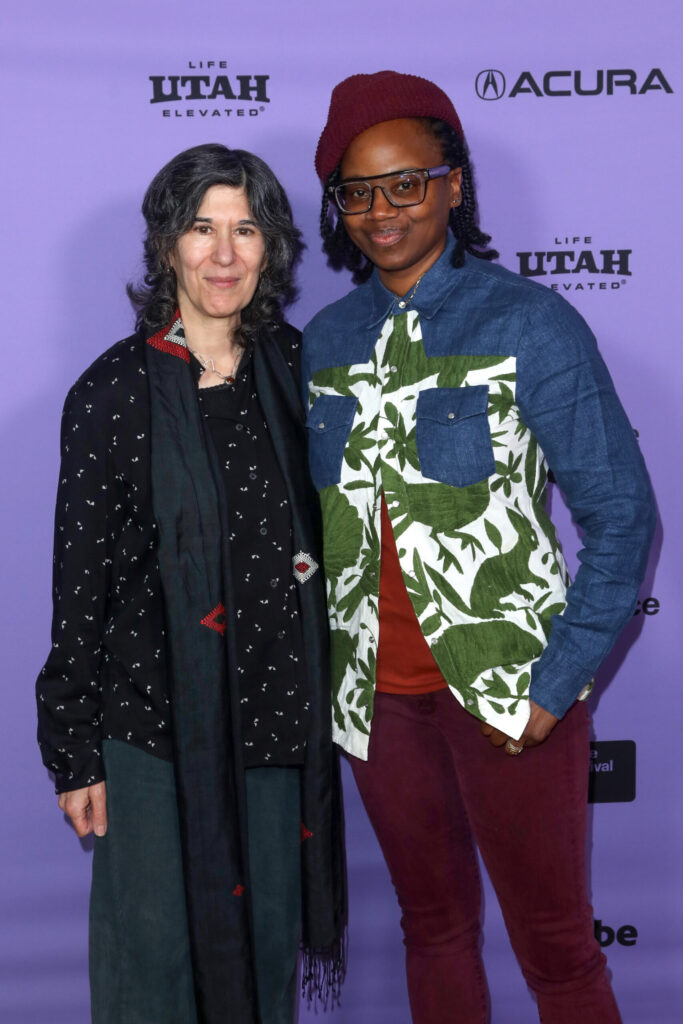
Granik on what she looks for during the casting process:
“I was thinking about a moment in the audition for Down to the Bone with Vera Farmiga, and sometimes there are things that someone brings that you realize could be an immense help to the film. She was living, at the time, in the location where we were going to film. That wasn’t her town of origin, she was from Jersey, but this was upstate New York. And there were some details that she gave in a little bit of a side discussion that we had, that I was like, ‘Oh, this person really knows this landscape. This person really has met a lot of people in the neighboring villages.’ So that was extremely helpful for me. She was able to visualize some of the same places I was visualizing in the script and trying to depict. … She was just so ready to walk into the boots of the person that this script was written about, and she was so willing to do boots-on-the-ground research. It’s like this willingness — you’re being told by this actor that they also want to be a collaborator in embodying the role. … That’s a big, huge plus for me.”
Rees on depicting the lives and experiences of veterans of conflict:
“I’m interested in who gets to be a patriot. I’m interested in what that looks like after the media goes away, after the press narrative has been written. For me personally, both my grandfathers were veterans. On my mom’s side, World War II, and on my dad’s side, the Korean War. The one who went to the Korean War got to be a janitor when he got home, and the one who was in World War II got to be a postman when he got home. So at the time, ‘Oh, these are good jobs for you!’ But the idea that on one side you’re a hero, on the other side you’re a janitor — I feel like that story hasn’t been told, and so I’m interested in getting into that and kind of complicating this idea of patriotism and who should really be waving flags. My family has just as much of a right to wave a flag, but we don’t.”
Granik on finding resolution in difficult stories:
“One of the big things I learned about other countries’ filmmaking is that there’s a [higher] tolerance for nihilism in other cultures. And we are the country that has ‘Have a Nice Day’ on our plastic bags, or did. As an American storyteller, I find it hard not to actually look for some [resolution]. I don’t want it to be corny and trite and wrapped up, but I’m always looking — ‘What is some tiny form of escape hatch, or some mutual aid, or somebody that cares about that person?’ What is the small fragment that could allow that person to get to the next stage of their existence, hopefully intact?”
Rees on the depiction of violence in film:
“I think for me, it’s just whatever serves the story, whatever serves the character. The scope and lasting effects have to be commensurate with whatever story you’re telling, but I do think there’s a way in which you can be more realistic in that the effects can linger. So it’s not like, bang! Somebody’s shot and two weeks later they’re back up and they’re fine. I like showing the lasting scars of it, in a way. And I had an interesting experience with Mudbound, because people were saying they couldn’t watch the lynch scene — oh, it’s too hard, it’s too violent! But you can watch John Wick, you can watch Reservoir Dogs, you can watch any number of ultraviolent films, you can watch A Clockwork Orange, no problem. So I’m interested in the ways in which realistic violence is unpalatable, but cartoonish violence or ultraviolence is palatable, and challenging audiences and what we’re able to hold our gaze on.”
To see more from the 2024 Festival, click here.




